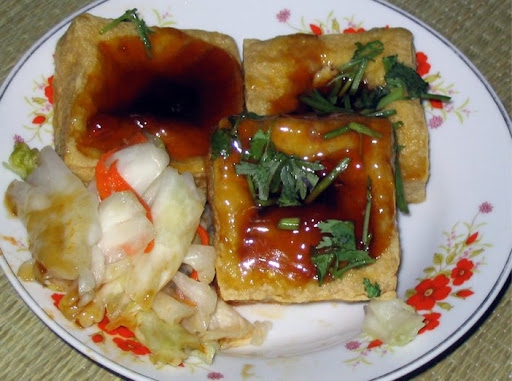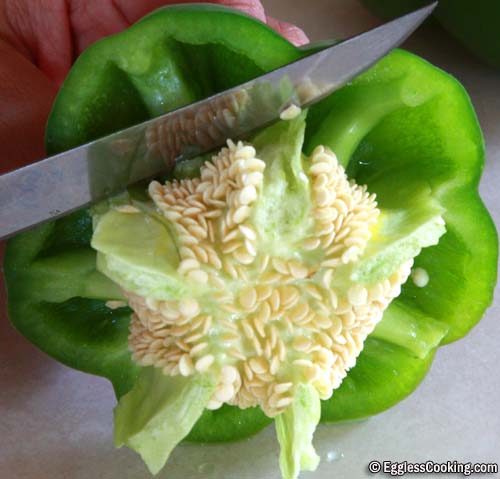I recently received a request to write about two malodorous foods. Normally, I’d never reject the requests of my readers, but I am going have to object to researching Stinky Tofu. I’m sorry if I offend anyone and their love for this double-fermented soybean, but I hate chou-tofu (臭豆腐). I’ll travel and go out of my way to get dinner with my significant other/friends/family, but not when this sour, deep-fried legume is present. To date, I’ve only had one experience where this concoction was tolerable, and that involved a pitcher of Amber Bock and the company of Ethan and Suana.
[http://lh6.ggpht.com/vincent.vanwylick/R_cRaMqShvI/AAAAAAAAAh0/WLenxeoql9U/stinky+tofu+vegetarian+restaurant.jpg]
The other ingredient comes from the warm, tropical environments of Southeast Asia. This fruit has evolved to synthesize sulfuric compounds that are notorious for being unfruit-like. Some have described it as putrid and rotten while others describe it as a freshly cut onion, or left out cheese. Personally, I think it smells as if someone rips one in your face after a meal of frank and beans. Yes, that is how I describe smells! So what’s this blissful fruit you ask?
[http://www.durianss2.com/durians_files/DURIAN-RAJA-KUNYIT_big.jpg]
This armor-plated, thorny fruit grows as clusters in trees and is called Durian. I think it’d be cooler if it was called “Morning Star...” Anyway, the smell that is emitted propagates from the spiky rind and has evolved to attract the senses of large jungle creatures such as elephants, tigers, and pigs. Like our mammalian brethren, fans of durian prize it for its savory and creamy texture. After peeling the carapace exterior, you’re pleasantly greeted with the meat that has the firmness of custard. The meaty flesh near the seeds, contains high amounts of sugar and taste fruity and savory.
Throughout parts of Asia, the Durian is highlighted in many desserts, drinks, cakes and other types of sweets. It’s also combined in many sauces and makes a wonderful starch substitute for taro, cassava, and yams. However, many hotels, resorts, and hubs of public transportation ban durian due to its aromaticity. To counter this, many researchers are breeding variations of durian hoping to eliminate the sour, gym-sock odor.
And if the smell doesn’t scare people off, Durian substitutes as a wonderful weapon to bludgeon thugs.










.jpg)




